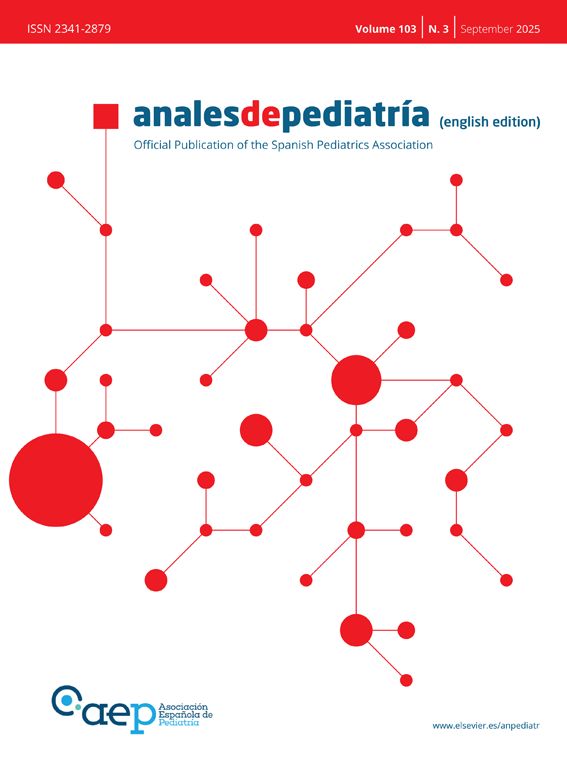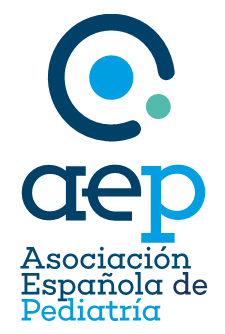Sinusoidal obstruction syndrome (SOS), also known as hepatic veno-occlusive disease (VOD), is a serious complication of hematopoietic stem cell transplantation (HSCT) that presents with elevation of bilirubin, tender hepatomegaly and fluid retention. It is caused by endothelial injury in the hepatic sinusoids, leading to hepatocyte damage and liver failure. Corbacioglu et al.1 identified both classical and emerging risk factors for SOS, including novel drugs and genetic biomarkers.
We analyzed the incidence of moderate-to-severe SOS in a cohort of 159 patients with hematological malignancies who underwent T cell-depleted haploidentical HSCT between 2005 and 2020. We selected haploidentical HSCT for this study because it accounts for 60% of allogeneic transplantation procedures and, by focusing on these cases, we could obtain a homogeneous cohort in terms of the donor type and stem cell source. We obtained informed consent in all cases.
The median age was 9 (1−19) years and 106 of the patients were male. Eighty patients had a diagnosis of acute lymphoblastic leukemia (ALL) and 79 patients of acute myeloid leukemia (AML). Forty-eight were in first complete remission (CR1), 55 in second remission (CR2) and 56 in more advanced disease stages. The median donor age was 40 (2−54) years, with a predominance of female donors (95). The killer-cell immunoglobulin-like receptor (KIR) haplotype was type B in 133 donors and type A in the other 26.
None of the patients had preexisting liver disease and none had been treated with inotuzumab ozogamicin or gemtuzumab ozogamicin prior to HSCT. In recent years, we have observed an increase in patients from Latin America in our unit, so that 45 children were Hispanic/Latino (non-Caucasian) in the study.
A myeloablative conditioning regimen was administered, consisting of fludarabine (30 mg/m²/day from day −6 to −2), intravenous busulfan, administered once daily from day −7 to −4 (dose adjusted by weight, initially according to summary of product characteristics and thereafter to the Bartelink et al.2 dosing guideline: <9 kg, 1 mg/kg/dose; 9−16 kg, 1.2 mg/kg/dose; 16−23 kg, 1.1 mg/kg/dose; 23−34 kg, 0.95 mg/kg/dose; and >34 kg, 0.8 mg/kg/dose), and thiotepa (5 mg/kg/day from day −3 to −2). Pharmacokinetic and pharmacodynamic monitoring and adjustment of busulfan levels were not performed. Lymphocyte depletion consisted of CD3+/CD19+ depletion in 79 cases and TCRαβ+/CD19+ depletion in 80. Patients received cyclosporin A for graft-versus-host disease (GvHD) prophylaxis.
The diagnosis of SOS was based on the modified Seattle criteria3 until 2018 and on the European Society for Blood and Marrow Transplantation (EBMT) criteria4 thereafter. In all former cases, the diagnosis was validated retrospectively using the EBMT criteria. We analyzed the following variables as potential risk factors: age, sex, ethnicity (Caucasian vs Hispanic/Latino), diagnosis, disease stage, previous transplant, HSTC-specific comorbidity index (HCT-CI) and donor characteristics (age, sex and KIR haplotype).
We considered ethnicity because genetic factors may influence transplant-related toxicity,5,6 so it would be reasonable to expect differences between Caucasian and non-Caucasian patients.
14 patients developed SOS, with a cumulative incidence of 9.8 ± 2.5% and a median time of 26 days (2–212) from HSCT. Table 1 summarizes their characteristics. The treatment consisted of defibrotide at 6.25 mg/kg every 6 h for a minimum of 21 days and was maintained until symptom resolution. There were no documented treatment-related adverse events.
Descriptive analysis of Sinusoidal Obstruction Syndrome (SOS) in Haploidentical HSCT with Lymphocyte Depletion (n = 159).
| ENTIRE COHORT | SOS | ||
|---|---|---|---|
| (n = 159) | (n = 14) | P | |
| Number of cases | 14 (8.8 %) | ||
| Cumulative incidence (CI) | 9.8 ± 2.5% | ||
| Age in years | NS | ||
| Median (range) | 9 (1−19) | 3 (1−17) | |
| Biological Sex (%) | NS | ||
| -Male | 106 (66%) | 11 (79%) | |
| -Female | 55 (34%) | 3 (21%) | |
| Ethnicity (%) | |||
| -Caucasian | 114 (72%) | 5 (36%), CI 4.7 ± 2% | P = .001 |
| -Hispanic/Latino | 45 (28%) | 9 (64%), CI 22.9 ± 6.9% | |
| Diagnosis (%) | NS | ||
| -ALL | 80 (50%) | 7 (50%) | |
| -AML | 79 (50%) | 7 (50%) | |
| Disease stage (%) | NS | ||
| -Early | 48 (30%) | 6 (42%) | |
| -Intermediate | 55 (35%) | 4 (29%) | |
| -Advanced | 56 (35%) | 4 (29%) | |
| Donor age in years | 40 (2−54) | 39 (29−51) | NS |
| Median (range) | |||
| Donor biological sex (%) | NS | ||
| -Male | 64 (40%) | 6 (43%) | |
| -Female | 95 (60%) | 8 (57%) | |
| KIR haplotype (%) | |||
| -KIR A | 26 (16%) | 2 (%) | NS |
| -KIR B | 133 (84%) | 12 (%) | P = .8 |
Abbreviations: ALL, acute lymphoblastic leukemia; AML, acute myeloid leukemia; CI, cumulative incidence; KIR, killer-cell immunoglobulin-like receptor; NS, not significant; SOS, sinusoidal obstruction syndrome.
The univariate analysis revealed that SOS was associated with patient age (25% of patients aged ≤2 years vs 6% of patients aged >2 years; P = 0.01) and Hispanic/Latino origin (64% compared to 36% in Caucasian patients; P = 0.02). The logistic regression analysis confirmed that both variables were associated with an increased risk of SOS: age equal or less than 2years (hazard ratio [HR], 3.8; 95% CI, 1–13.8; P = .03) and Hispanic/Latino ethnicity (HR, 4.5; 95% CI, 1.6–12.8; P = .002). The cumulative incidence of SOS for Hispanic/Latino patients was 22.9% (±6.9%) compared to 4.7% (±2%) for Caucasian patients, a statistically significant difference (P = .001). Both groups were comparable in terms of median age, the proportion of patients younger than 2 years and other clinical variables associated with transplant-related toxicity. These findings suggest that Hispanic/Latino ethnicity may increase the risk of SOS by nearly five-fold. To our knowledge, this risk factor has not previously been reported in the literature.
The transplant-related mortality for the entire group was 24.8% (± 4%), with a median follow-up of 7.2 (1–11.12) years, and was higher in patients with SOS (56 % [±14.7%] vs 21.8% [±4%]; P < .001) (Fig. 1) and in non-Caucasian patients compared to Caucasian/Indo-European patients (33.6% [±7.7%] vs 21.3% [±4.5%]; P = .05). Table 2 presents the causes of death broken down by ethnicity. The overall survival for the entire cohort was 55.9% (± 4%), with a survival of 31.4% (±12%) in patients with SOS compared to 58.3% (±4.5%) in patients without SOS (P = .004). The differences in overall survival between the two ethnic groups was not statistically significant (Caucasian, 58.3% [±5%] vs non-Caucasian, 49.8% [±8%]; P = .1).
Distribution of causes of death. Comparison between Caucasian and Non-Caucasian patients.
| Cause of Death | Non-Caucasian n = 20 | Caucasian n = 41 | Total n = 61 | P-value |
|---|---|---|---|---|
| Relapse | 7 (35.0%) | 22 (53.7%) | 29 (47.5%) | NS |
| Infection | 6 (30%) | 7 (12.2%) | NS | |
| Bacterial Infection | 1 (5.0%) | 1 (2.4%) | 2 (3.3%) | NS |
| Viral Infection | 4 (20.0%) | 4 (9.8%) | 8 (13.1%) | NS |
| Fungal Infection | 1 (5.0%) | 2 (4.9%) | 3 (4.9%) | NS |
| GVHD | 2 (10.0%) | 6 (14.6%) | 8 (13.1%) | NS |
| Endothelial damage | 2 (10.0%) | 5 (12.2%) | 7 (11.5%) | NS |
| Graft failure | 2 (10.0%) | 0 (0.0%) | 2 (3.3%) | NS |
| Multiple organ failure | 1 (5.0%) | 1 (2.4%) | 2 (3.3%) | NS |
Abbreviations: GVHD, graft versus host disease; NS, not significant.
Sinusoidal obstruction syndrome is a significant cause of post-transplant mortality, and given the availability of effective treatment with defibrotide, early diagnosis and intervention are essential. Ethnic differences in genetic polymorphisms of hepatic metabolic enzyme pathways has been reported to influence toxicities related to HSCT.
Franca et al.7 reviewed the role of pharmacogenetics in HSCT outcomes, examining the association between gene families such as cytochrome P450 (CYP450) and glutathione S-transferases (GSTs) with SOS. Survival was poorer in patients carrying at least one normal CYP2B6 allele compared to those with reduced-function alleles on both chromosomes (40% vs 100%; P = .0001). In the bivariate analysis, CYP2B6*6 was associated with a higher incidence of SOS when both the donor and recipient had the wild-type genotype.
Rocha et al.5 analysed drug metabolism and its polymorphisms in both donors and recipients. CYP2B6 polymorphisms that interfere with cyclophosphamide metabolism were associated with the incidence of SOS (CYP2B66 donor; P = .03). When it came to hepatic CYP2B6 expression, significant differences were observed between ethnic groups: CYP2B6 activity was 3.6–5.0 times higher in Hispanic women than in Caucasian women (P = .022). Similarly, a study found a higher prevalence of CYP2C93, CYP2C19*4 and UGT2B7 IVS1 + 985 A > G polymorphisms in Hispanic compared to non-Hispanic populations in the United States.8 This interethnic variation in the frequency of genetic polymorphisms for drug-metabolizing enzymes may influence transplant-related toxicities such as SOS. There are limitations associated with the retrospective nature of this study, but this is likely the only feasible strategy to study SOS, especially in pediatric patients and in the context of T cell depleted haploidentical HSCT. We also acknowledge that it would be interesting to know the genetic polymorphisms of drug-metabolizing enzymes in these patients, because we believe that it could contribute to the identification of patients at risk of SOS.
In conclusion, within our cohort, Hispanic/Latin American ancestry emerged as a relevant risk factor for SOS, an association not previously described in the literature. Further studies are needed to confirm these findings and to ensure the inclusion of non-Caucasian populations in pharmacogenetic research, in which they are currently under-represented.
The authors declare that they have no conflict of interests.







